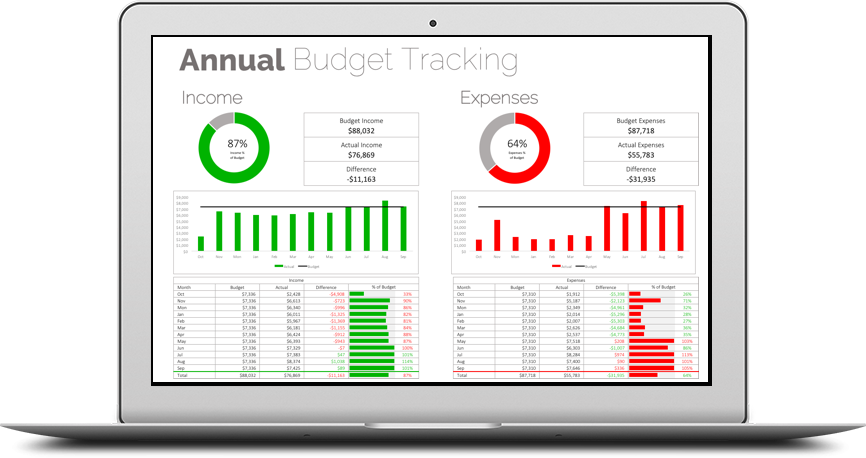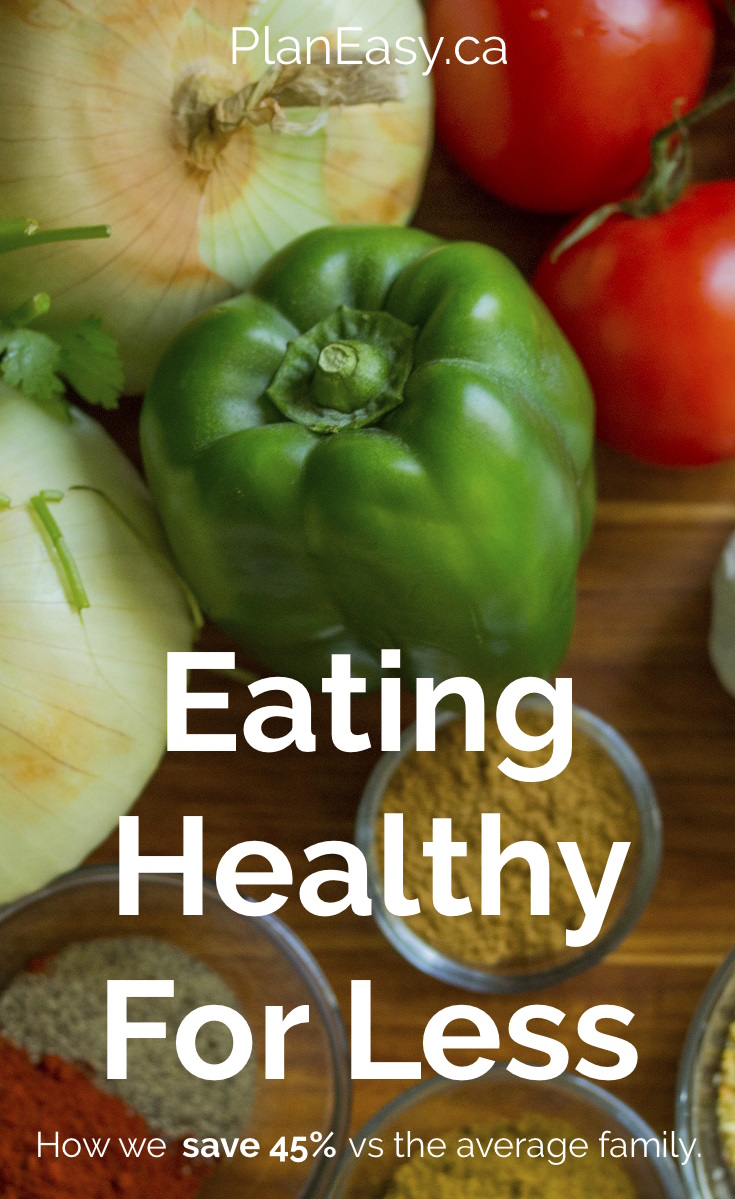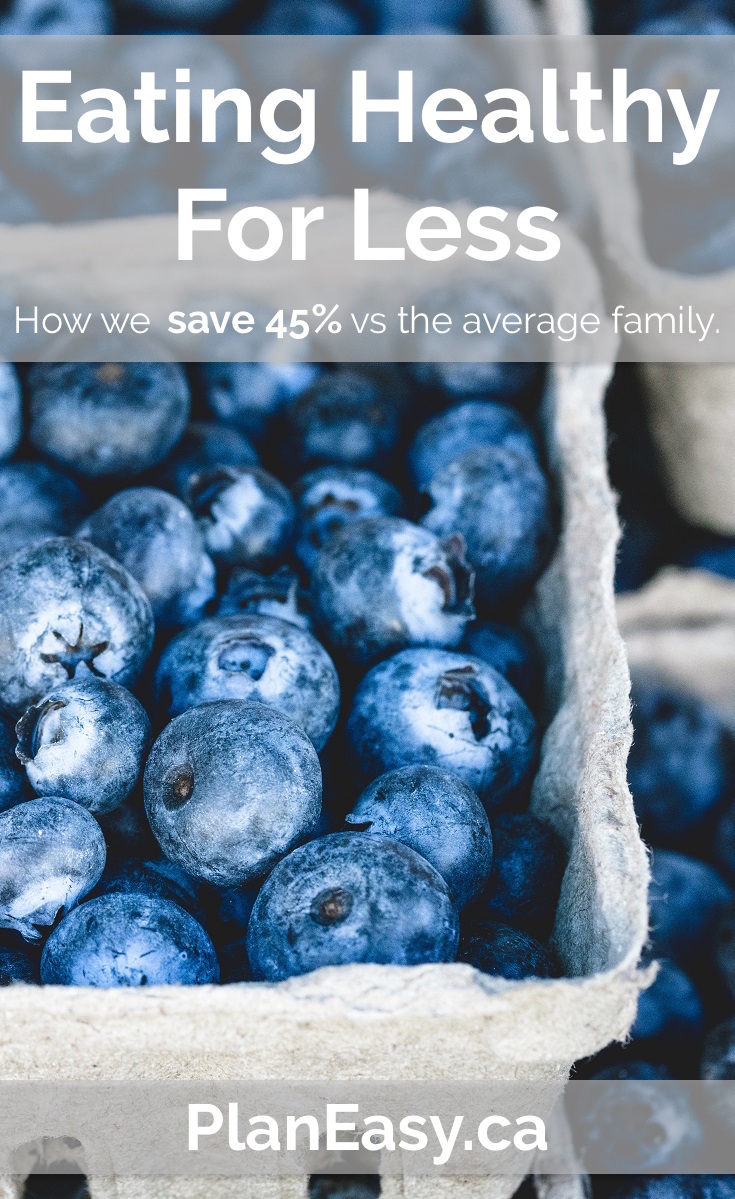Eating Healthy For Less
Eating healthy can be hard. It can also be expensive. But it doesn’t have to be either these things. With a little work, eating healthy can cost you less than you currently spend on groceries each month.
For the average household, groceries account for over 10% of their annual spending. That’s over $6,100 per year! If you have children it’s even higher; families with children have an average expenditure of $8,753 per year!
Cutting 10-20% from your grocery bill can mean $1,000’s per year in savings. Saving money on groceries can help you fund the simple retirement plan or help you reach other financial goals.
But saving money on food doesn’t mean eating crap. Below you’ll find seven different ways to cut down on your grocery bill and still eat well.
In our home I’m responsible for 80-90% of the cooking and because I do most of the cooking I also do the meal planning and grocery shopping too. This means the grocery budget is entirely my responsibility.
For the four of us, two adults and two children, our grocery budget is $4,800 per year. That’s $400 per month or about $100 per week. We spend about 45% less than the average family with children.
To make this work we use the seven strategies below to help reduce our grocery budget while still eating healthy.
Go Vegetarian A Few Nights Per Week
Going vegetarian a few nights per week is one of my favourite ways to save money on our grocery budget. Not only is it healthy but it’s also good for the budget and good for the environment.
We have a few “go to” vegetarian recipes that we like to make.
One of our favorites is a veggie black bean burger. I’ve tried multiple veggie burger recipes but this black bean burger recipe by chef Joy Crump is by far my favourite. It has great flavour and great texture for a veggie burger. We make large batches, about 20 burgers at a time, and put the rest in the freezer for later.
Another favourite of ours is lentil taco salad. Everything is the same as a regular taco salad just replace ground beef with lentils. We even found a recipe for home made taco seasoning.
The last one is rice & bean burritos. The rice & bean mixture is great with some strong cheddar cheese and hot sauce. Very filling and very easy to make.
Eat In-Season Fruits and Vegetables
Eating only in-season fruits and vegetables is less expensive and usually better quality. We try not to buy things out of season (of course sometimes it’s unavoidable).
During the “off season” we buy fruit and vegetables that keep well like apples, carrots, onions, potatoes, and squash. We also buy frozen fruit like strawberries, blueberries, blackberries etc.
We also buy greenhouse-grown cucumbers, tomatoes and peppers during the off-season from a local farmers market.
New blog posts weekly!
Tax planning, benefit optimization, budgeting, family planning, retirement planning and more...


Go Straight To The Source And Stock Up
Buying in bulk usually means buying packaged foods but that isn’t always the case. Some vegetables store well. These are the ones we like to buy in bulk. We also like to buy straight from the source.
You can buy these vegetables from the grocery store but you’ll get much better quality & price if you buy them at a farmer’s market or straight from the farm.
Root vegetables like carrots and turnips are great for buying in bulk. As are potatoes, onions and squash.
One farmer in our area regularly sells butternut squash for $1 a piece (vs $1-2/lb at the grocery store). Last year we bought 20 of them and we were eating squash well into January. This year we’re planning to buy 30+ to see how long they’ll last. We make butternut squash soup, ravioli and pasta sauce at least once per week in the winter.
Find A Few Good (& Cheap) Recipes
If you’re new to cooking, then finding a few good & cheap recipes is the best place to start. Try out a few and keep the ones you like. Have a list of approved recipes to help make meal planning easier.
There are a couple of places I send people for good & cheap recipes.
First is a free book by Leanne Brown called (unsurprisingly) Eat Good and Cheap. It’s 176 pages of simple, healthy and inexpensive recipes. Some of these recipes are now part of our regular menu.
Another source of tasty but inexpensive recipes is a website called BudgetBytes. This site is run by Beth. Not only does she provide inexpensive recipes but she also provides a detailed breakdown of cost by ingredient, by serving and for the entire recipe. Beth has a ton of great recipes for you to try out.
Meal Plan
Deciding what to make for dinner each night is tough. Being tired and hungry leads to more take-out or fast food purchases. This is a real budget killer.
Avoid the temptation to get take-out by meal planning for the entire week. Decide what meals you’ll make and then go grocery shopping accordingly.
Not only will this help you avoid take-out purchases but this will also help you reduce food waste. By planning your meals in advance, you can cut down on the amount of food you throw away each week. Old food costs us $14.6 billion annually. That’s $402 per person in wasted food each year on average. Some families are better, some worse.
If we threw away food at the average rate it would increase our grocery budget by 34%!
Another benefit of meal planning is that you can use leftovers from one meal in the next. This makes cooking even easier the next day. Boiled potatoes can be made into fried potatoes the next day. A rice side dish can be used for fried rice. Extra chicken can be used in a quick stir fry. There are tons of options.

“The average person wastes $402 in food each year!”

Meal Prep
There is a whole spectrum of meal prepping. Some people make 20+ individual meals at once. Others make large batches to be used later.
Personally, I like to make large batches and freeze smaller portions. These smaller portions are the perfect size for one dinner.
For example, we make large batches of spaghetti sauce and freeze them. One batch is often enough for 4-6 meals. As mentioned above, we also make large batches of vegetarian black bean burgers. One batch is enough for 7-8 meals. We also do this for other things that freeze well like soup, chili, ravioli and lasagnas.
At any moment, we probably have 15-20 meals ready in our freezer. These still require a bit of prep but it’s significantly less than cooking from scratch every night. These prepped meals usually make 2+ appearances in our weekly meal plan. That means 30% of our weekly meals are pre-made.
Stock Up On Staples
We have a few items that we use on a regular basis that I regularly stock up on. From memory, I can give you the “good price” for each of these items and I will wait until the price goes below the “good price” before stocking up.
You can find multiples of these items in our pantry or in our freezer. Peanut butter. Jam. Crushed tomato. Diced tomato. Ketchup. Lemon juice. Flour. Sugar. Brown sugar. Rolled oats. Raisins. Dried cranberries. Corn flakes. Cheerios. Cheese bars. Frozen wild blueberries.
Eating Healthy For Less
Eating healthy doesn’t have to be hard or expensive.
With the right knowledge and preparation you can save $1,000’s per year on your grocery bill and still eat healthy. By using even a few of the suggestions above you can spend less on groceries each week. This money can be used for other financial goals like paying down debt, saving for your child’s education, saving for retirement or maybe just saving for a nice vacation.
Whatever you goal might be, eating healthy isn’t something you need to sacrifice. Keep eating healthy, just do it for less!
Join over 250,000 people reading PlanEasy.ca each year. New blog posts weekly!
Tax planning, benefit optimization, budgeting, family planning, retirement planning and more...
Join over 250,000 people reading PlanEasy.ca each year. New blog posts weekly!
Tax planning, benefit optimization, budgeting, family planning, retirement planning and more...





0 Comments